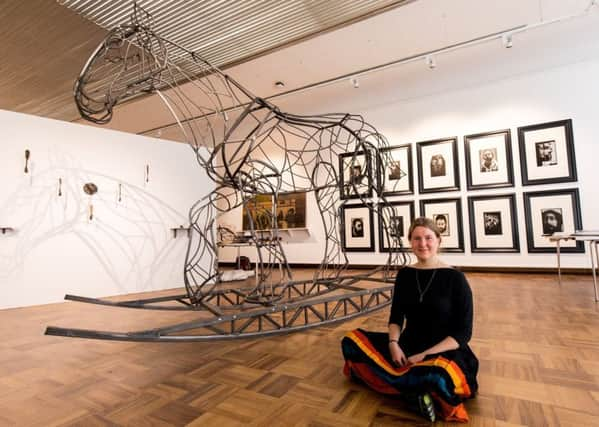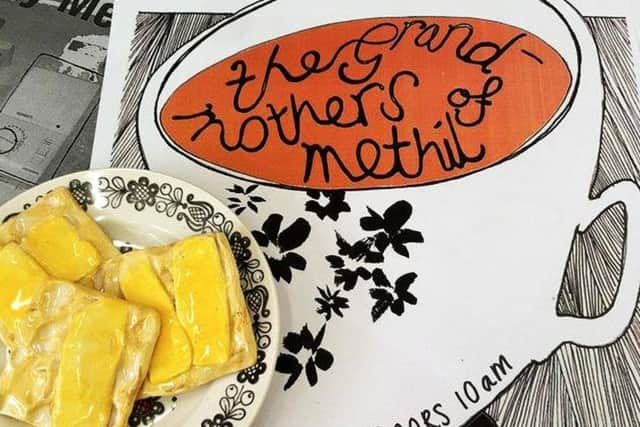Art review: Duncan of Jordanstone Degree Show 2017


Childhood monsters, beguilingly furry but still slightly scary, raise their heads in various students’ work, as the landscape of the playroom becomes a lens through which to examine adult life. Kirsten Bennie suggests that, while childhood monsters attach to imaginary fears, in adulthood the fears become real: her World of Adulthood includes a Politics Monster, a Money Monster and a Selfie Monster. Cat Hills is one of a number of students looking at mental health; her monsters are indicators of emotional wellbeing. Lucy Buchanan’s creatures bear a passing resemblance to The Clangers, and she has made a fondly nostalgic stop-motion animation with them, shown in a kitsch living room awash with Donnie Osmond records.
Degree Show 2017 ****
Duncan of Jordanstone College of Art & Design, Dundee


A number of students are looking at the past, and at ageing, through the stories of their grandparents. Maya Wotherspoon tells her grandparents’ story in collected fragments; Kate Forbes’ work is inspired by her grandmother, a former dressmaker, now suffering from dementia. Elise Bell adds a welcome dash of humour by reimagining her grannies as a rock band, The Grandmothers of Methil, in a set complete with ceramic tea and cakes, record sleeves and their own brand of “heavy methil”. Amy Crawford’s response to doing workshops with dementia sufferers has been to create evocative laser etchings made with pressed flowers from Dundee University’s herbarium. Stacey Pover has been doing similar work with people suffering from schizophrenia. Applying what she has learned about the value of self-expression through art, she turns the same questions – “show me stress”, “show me friendship”, “show me freedom” – on herself.
Advertisement
Hide AdAdvertisement
Hide AdGareth William Graham’s photography and film casts beautiful semi-clad young people as mythological figures, but with a definite political edge. “We do not want your future” is a forceful statement by a generation frustrated with the world they have inherited. “Try and grab me by the pussy” says the placard held by one provocatively clad young woman.
Ulrika Kjeldsen’s impressive lifesize Clydesdale horse on rockers is part of a body of work inspired by The Cheviot, The Stag and the Black, Black Oil, referencing the exploitation of the working-class in Scotland. Gayle Watson’s installation of plastic bottles filled with a mix of car oil and water shows us how much oil is used to make each bottle, and how little multinational producers are doing to address environmental concerns.
Catherine Bunney’s work, which uses sculpture and sampled sound to create a kind of echo chamber, is making a point too. Too many people, in an age of fake news and ubiquitous social media, exist in an echo chamber of their own thinking where their opinions are never challenged.


James Wylie’s work relates to the ongoing restoration of nuclear bunker in a Dundee suburb which was to be a key nerve centre for the Royal Observation Corps in the event of a nuclear attack. His homespun “inner refuge” made from household goods and the chillingly direct voice of Government safety broadcasts take us straight back to an era of imminent nuclear threat.
Duncan of Jordanstone is traditionally strong in painting, and this continues to be in evidence, but what is also cheering is the number of students building skills in various media, from painting and print-making to glass and ceramics, as well as electronic media such as sound and filmmaking. Anna Michevica’s atmospheric landscape paintings capture light and a sense of a horizon. Mhari Davidson’s portraits explore the relationship between a father and a daughter by switching the positions of her subjects. Alice Campbell’s brand of symbolism drawns on a fusion of folklore from her Scottish, Irish and Carribean heritage.
Ken Bambury, who spent 30 years as a gardener, paints beautiful vignettes from the outdoors which look idyllic but show aspects of a world under threat, as well as making flutes and whistles from the dried out stems of the Japanese knotweed, transforming a garden pest into something unexpectedly beautiful. Sylvia Tarvet’s fine paintings and busts of women in middle-age explore a field of experience little plumbed in art.
And there is no shortage of people asking the big questions. Luke Wilson’s intricate ink drawings explore what an artist’s practice should be. Daria Zadarnowska has, through an encaustic technique of picture-making using layers of wax and mixed media, found a rather beautiful way of examining her search for God. Drew Mackie focuses on mortality, but through making fine ceramic urns adorned with trees and plants. Soul-searching is a common theme in degree shows, but these students do so with elegance and integrity.